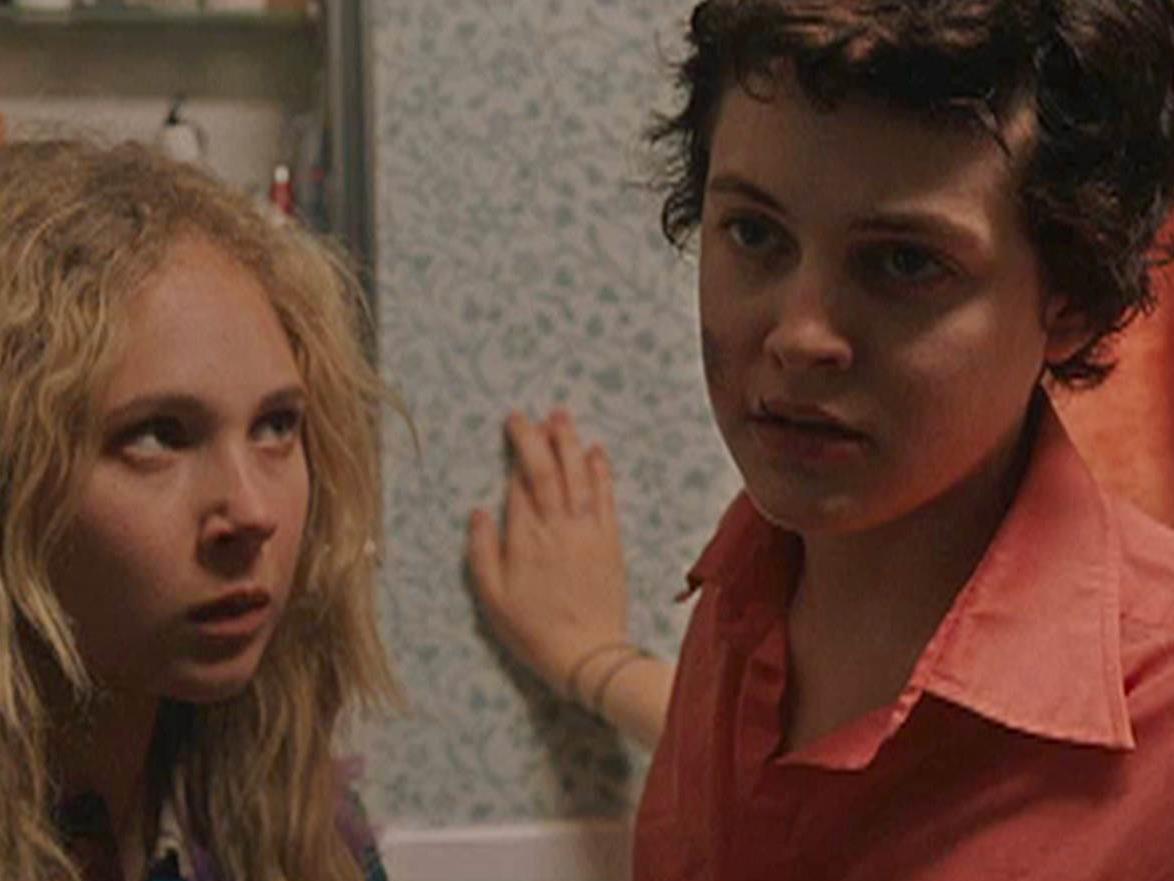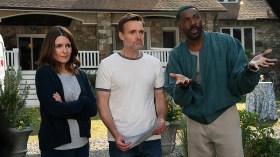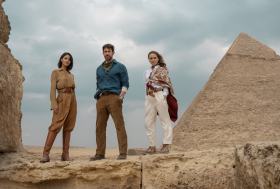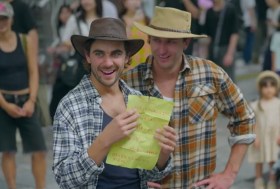In Jack and Diane, writer/director Bradley Rust Gray (The Exploding Girl) attempts to evoke not the John Mellencamp song of the same name that immediately springs to mind, but a combination of passion and terror. As its titular protagonists find comfort in each other in the grungy New York City streets, the film unravels as an unconventional love story wrapped in coming-of-age confines. As the flighty, pretty Brit-on-holiday Diane (Juno Temple, Magic Magic) starts a romance with tough local tomboy Jack (Riley Keough, Magic Mike), then struggles with the consequences of their pairing, her feelings manifest in frightening visions.
Supernatural thrills and youthful amorousness make for common bedfellows of late, and while Gray tries to invest a sense of difference in his embrace of both ideas, his combination seethes with clumsiness rather than confidence. The awkward first flourishes of same-sex love are apparent, as are the physical changes that the pursuit of lust inspires, but stiltedness is the obvious outcome – in Jack and Diane’s tentative yet devoted courtship, in the film’s never-subtle statement of teenage uncertainty, and in the recurrence of Yazoo’s ‘Only You’ that forms the thematic musical refrain.
Aiming to display the brooding disquiet of unclear – but immersive – emotions, as intertwined with pure, animalistic urges, there is an interesting tale to tell in the central pairing, though not one the feature always recognises. Instead, dream-like aesthetics are styled to show the throws of sexual body horror, but the film is more attuned with mood than meaning. Dark and gloomy imagery dwells in the shadows. Nosebleeds and facial scratches illustrate barefaced bodily pain. Melancholy lingers, as does the camera in close-up on Temple and Keough’s lengthy glances. Affection is pronounced by the characters, but never feels anything other than fleeting in the execution.
Blatant points are made in the minutiae of the narrative, again wavering in effectiveness. Struggling at the first signs of trouble, the central duo suffer when Diane’s aunt (Cara Seymour, An Education) reveals Diane is soon departing for a Paris fashion school, with Jack’s swiftly fleeing into the arms of an older tattooist (Kylie Minogue, Holy Motors). An amateur internet porn sequence posits the seeming alternative to their bond, all crude college frat boys, opportunistic exploitation, and a friend (Dane DeHaan, Kill Your Darlings) watching on. Perhaps the most subtle section stems from metaphoric lycanthropic interludes that endeavour to convey baser desires, as intricately animated with blood, hair and skill by Quay brothers Stephen and Timothy (The Piano Tuner of Earthquakes).
It is to Temple and Keough’s credit that they show persistence in their efforts to overcome average dialogue and slight characterisations, and to the film’s betterment. The former may be in the full thrust of her seen-before little-girl-lost persona, but demonstrates the requisite anxiety with her usual aplomb. The latter swaggers with substantial screen presence, belying her brief cinematic resume and recalling her star pedigree. Their charisma sells the love story beyond Gray’s not-entirely-convincing allegory; indeed, it is in the romance, not the horror, that Jack and Diane’s aims are almost achieved.
Rating: 2 ½ out of 5 starsJack and Diane
Director: Bradley Rust Gray
US, 2012, 110 mins
Melbourne Queer Film Festival
www.mqff.com.au
13 – 24 March
Actors:
Director:
Format:
Country:
Release:





